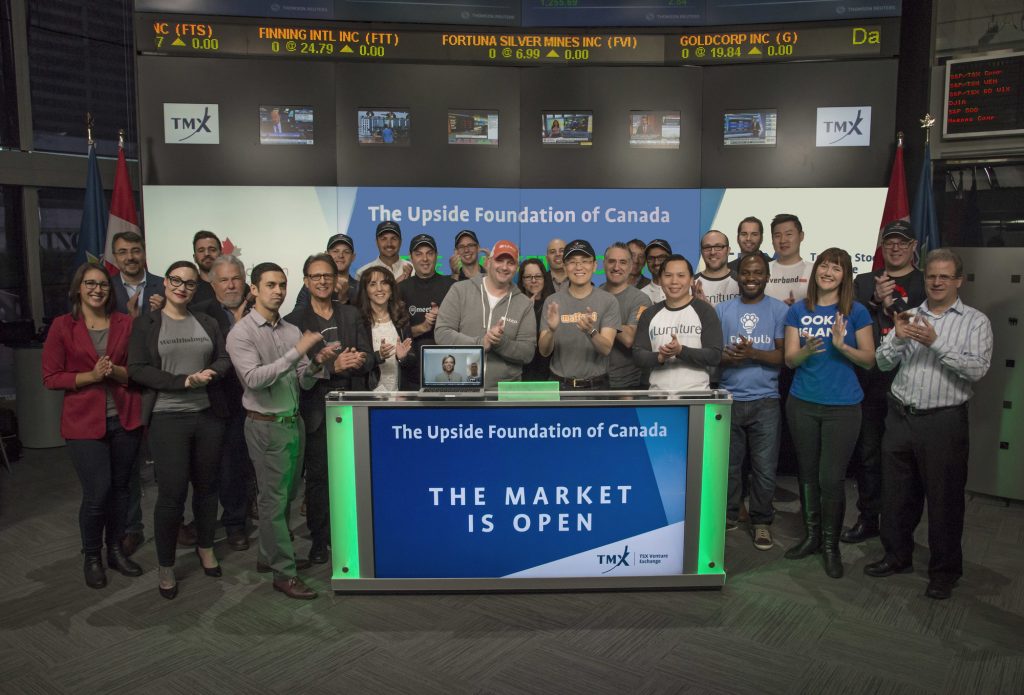Welcome to a BetaKit weekly series designed to help startups and entrepreneurs. Each week, investors Roger Chabra and Katherine Hague tackle the tough questions facing founders today. Have a question you would like answered? Tweet them with the #askaninvestor hashtag, or email them here.
As we approach the celebrations around Canada Day and Independence Day, we thought we would take some time to address the important topic of startups giving back to their ecosystem and society, in general.
Founders make incredible sacrifices to change the world and build out their visions. One cannot truly understand this until you are in their shoes. In the early days, it’s about mere survival and brute force to get your product to market and onboard customers.
The most important thing when selecting a cause is to genuinely care about the selected cause.
As you scale, the types of challenges you face are very different, but no less stressful. Managing and retaining great people, making payroll, keeping customers happy, managing demanding investors, morphing your product to stay relevant and ahead of the competition; the job of a founder is never ending.
It’s easy to forget about, or postpone, giving back to your ecosystem or society. It’s a natural thing given that you have what appears to be more immediate and pressing issues at hand. Despite this, many successful founders are rethinking the stage at when they can begin giving back and starting to do this early in the life of their companies. It’s a very encouraging trend.
To address today’s topic, we called upon Jennifer Couldrey, foundation manager at The Upside Foundation of Canada. Upside was founded in 2013 by two venture capitalists, Robert Antoniades and Mark Skapinker, and business consultant Janie Goldstein. Jennifer hustles as hard as any company founder I have met, is super passionate about her causes, and she is a great ambassador for this organization. Jennifer and the team at Upside are building something that has far-reaching impact beyond just the tech ecosystem, impacting the lives of everyone around us. It’s a noble and worthy cause.
Why should technology industry founders and company leaders think about charitable causes and giving back?
When launching a business, philanthropy is not usually top of mind for an entrepreneur. And if the topic of giving back does come up, it is often postponed as something that you’ll get to later, when you have more time and cash.
However, your plan is to be wildly successful, right? If you make a lot of money through your company, you’re going to make a donation to charity, presumably? If so, why not allow your company to start reaping the benefits of being a socially responsible company today?

Rather than being a distraction, when done strategically, embedding a social mission into your company at an early stage can be a major asset to your business. Giving back in the right way can help you attract talent, build a strong company culture and brand, build the founder’s network and reputation, increase access to opportunities, and place the company as part of a positive movement. It also minimizes demands on vital company resources — cash and time.
There are many different ways to engage in social responsibility: cash donations, employee volunteering, donating equity, responsible supply chain and operational practices, et cetera. Founders should strategically consider how giving back can be an asset to their company. Tying the success of your company to community benefit is a low-risk decision for visionary founders.
When is the right stage for leaders to think about giving back?
From inception, founders are thinking about what their company will stand for, the vision they have for the company, and what their impact will be. At the same time, founders should consider the impacts (both positive and negative) that the company’s operations will have in the world. Founders should be strategic about managing their impact, brand, and culture to ensure it aligns with their vision for the world.
There’s no reason why your business, your personal philanthropy and your corporate philanthropy can’t be integrated.
There are some forms of giving back that don’t make sense until a company is larger and closer to profitability, such as organizing employee volunteering days, or making cash donations to charities. There are some forms that make sense when your company is consistently generating revenue (e.g. one percent for the planet) or when you want to deeply embed socially responsible practices across your entire business (e.g. B Corp certification).
There are other forms of giving back that are easier and more impactful at an early stage, such as committing to share your upside. An organization like The Upside Foundation can be a platform for your company to embed a social mission right from the start, before you have cash to donate or have a cause decided upon, and can help you achieve your business goals. Making the decision to donate a small portion of equity is easier the earlier you commit.
What are the specific benefits of giving back?
Baking social responsibility into your brand can help you:
- Attract employees who care about having a higher social purpose in their work, and provide extra motivation and commitment from employees to the company’s success. Socially responsible companies see 2.3x retention; sixty percent of employees say a sense of purpose is part of the reason they chose to work for their employer.
- Build affinity with customers who care about supporting socially responsible companies. Eighty-four percent of consumers would switch to a brand affiliated with a good cause, 95 percent think it’s a good idea for companies to support causes.
- Differentiate yourself from competitors. Being unique, interesting, and caring is a highly effective and inexpensive way to build your brand value.
- Strategically planning your company’s social impact from the beginning sends a message to investors, employees, and other stakeholders about your belief in your company trajectory
Being a part of an organization like The Upside Foundation specifically can help you:
- Join a network of successful entrepreneurs, investors and industry leaders; connect with them at private events and open doors to people who you want to connect or partner with
- Access unique opportunities (e.g. being featured at the Salesforce World Tour, opening the Toronto Stock Exchange, access to invite-only events, meaningfully participating in Canada 150)
- Amplify your giving by being affiliated with a broad global movement
How should leaders choose which cause to give back to?
There are five different strategies leaders can consider when selecting causes:
- Tie to business. A FinTech company could support financial literacy; a real estate company could support affordable housing.
- Tie to personal cause. A charity that addresses a founder’s family member’s illness; a charity the founder sits on the Board of.
- Engage the company. Poll employees or customers to solicit input on the causes people care about the most; invite all employees to donate a portion of their own proceeds to a charity.
- Band together to make a greater impact. SickKids has launched a campaign to engage the Toronto tech community to fund the Emergency Room at the new hospital; collaborate with other founders to select a cause and a proposed solution.
- Build the world you want to live in. A company with a significant exit could launch their own foundation, define a mandate, and invest in multiple charities over multiple years focused on achieving a specific outcome. A founder could launch their own charity.
The most important thing when selecting a cause is to genuinely care about the selected cause, to leverage the cause as a business so that it acts as a motivator, and to bake the cause into your company or personal brand in an authentic way.
What are some examples of leaders in the technology space that have given back in interesting ways?
- Waze allocated one of options to Tmura, an Israeli organization similar to The Upside Foundation, which resulted in $1.5 million to children’s charities following its acquisition by Google for $1 billion. Tmura has gifted $15 million in grants so far.
- Salesforce implemented the 1+1+1 philanthropy model in 1999, donating one percent of products, one percent of employee time (six days a year), and one percent of equity to charitable causes. When Salesforce went public in 2004, that equity fueled the establishment of the Salesforce Foundation, which so far has issued $160 million in grants.
- Marc Benioff has written: “There’s no reason why your business, your personal philanthropy and your corporate philanthropy can’t be integrated. On the contrary: If you can get all the wood behind one arrow, that’s how you’re going to increase your impact.”
- Google founded Google.org in 2004, with a commitment of one percent of equity (one percent of the outstanding shares from their IPO — three million shares, to be donated and invested over 20 years) and one percent of annual profits. Today, Google donates $100 million in grants, 60,000 employee hours, and $1 billion in products annually.
- Mark Zuckerburg and Bill Gates both launched their own foundations with their wives.
- Under Steve Jobs, Apple had a reputation as “the least charitable tech company.” Tim Cook focused on changing this, starting with a $100 million donation in 2012.
- Last year alone, Warren Buffet donated $2.9 billion of Berkshire Hathaway stock.
- Unbounce is one of the earliest companies to establish a dedicated community engagement role, hiring someone when the company only had 170 employees, to manage charity initiatives and further Unbounce’s engagement within local communities.
In addition to founders and company leaders, how can VCs think about giving back to charities and what strategies can they employ?
VCs have 4 key ways they can give back to charities:
- Financial support for the causes they believe in
- Time and expertise as a Board Member and volunteer
- Influence, by supporting and helping bring awareness to community causes
- Supporting portfolio companies and mentees who are seeking to give back, and advocating for portfolio companies to include a social mission from the start as a strategic business imperative
Any other considerations to keep in mind when thinking about a giving strategy?
A giving strategy should be approached similarly to any other business decision — with clearly-defined goals, alternatives researched and considered, and an aim to minimize demands on resources while maximizing impact and benefits.
Companies that forego a conversation about their impact and planned giving strategy are missing an opportunity to create significant value for the company, for the founder, and for employees.
Entrepreneurs launch businesses to build the world they want to see — why not extend this vision beyond your business impact to include a more holistic view of what you would like the world to be like?
Got a question for the investors? Email them here.
Photo via Ellis-Fermor & Negus


